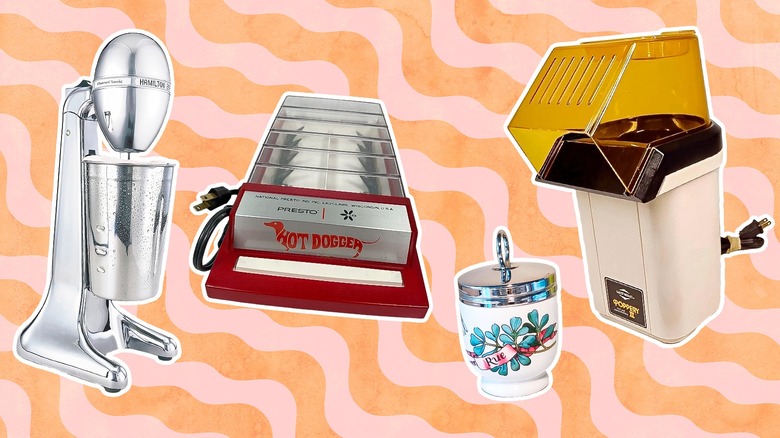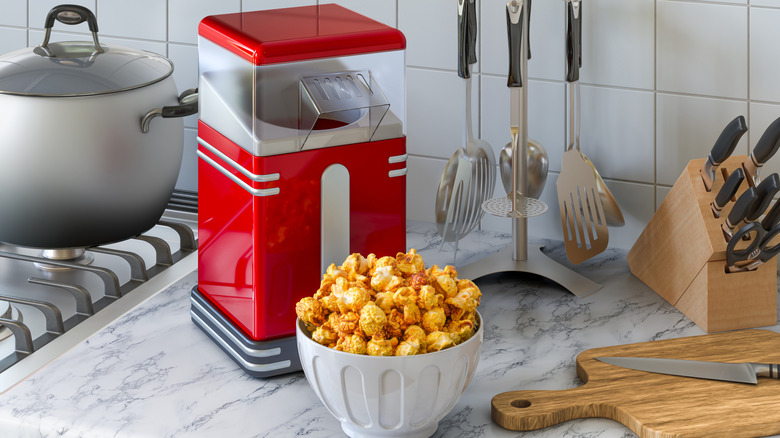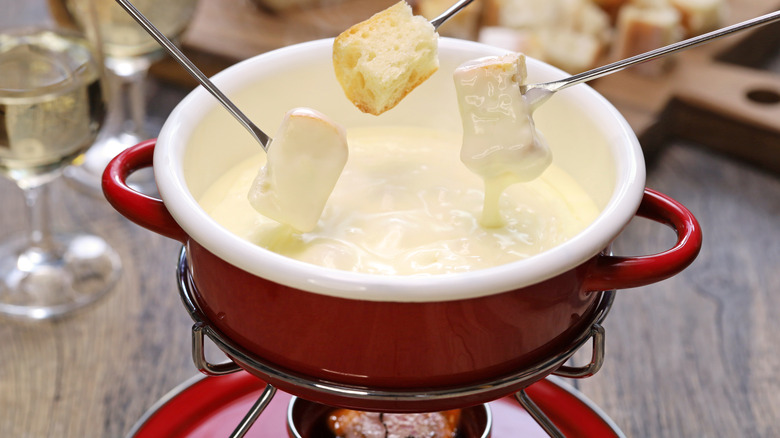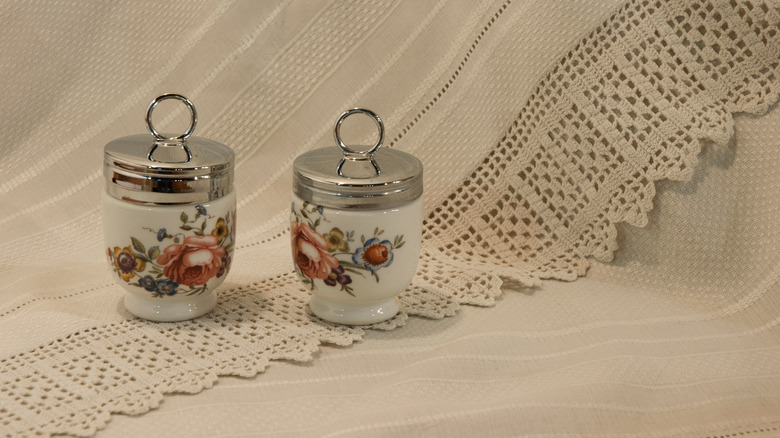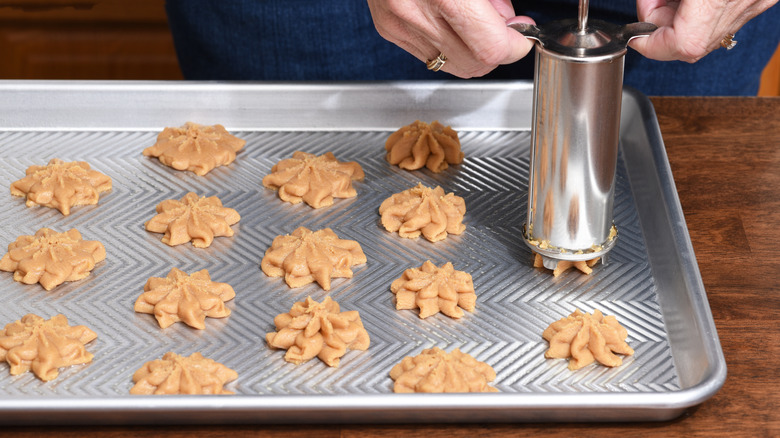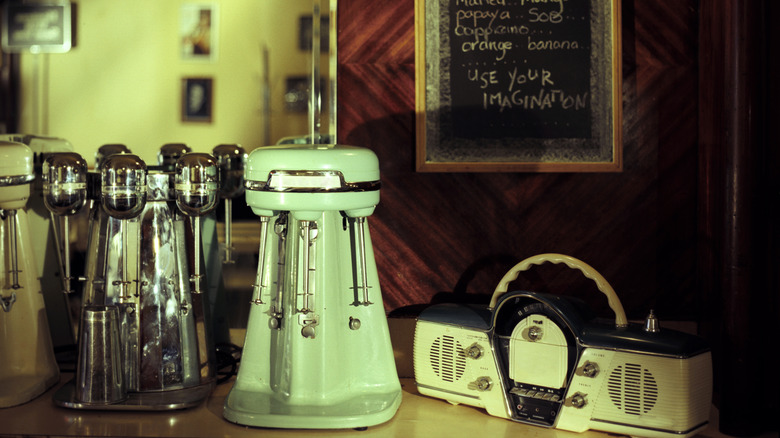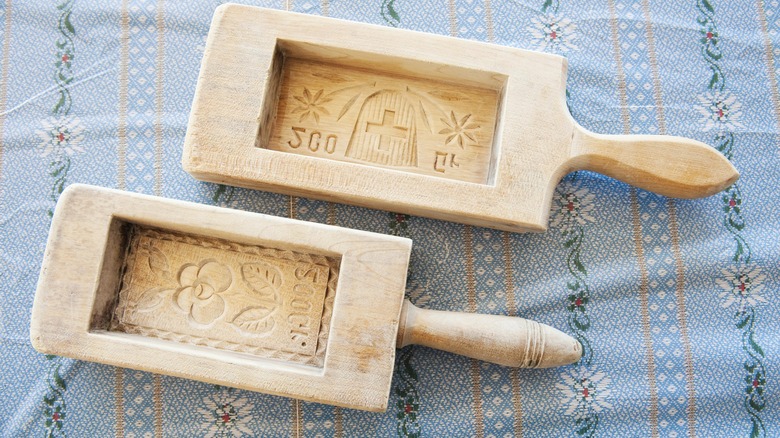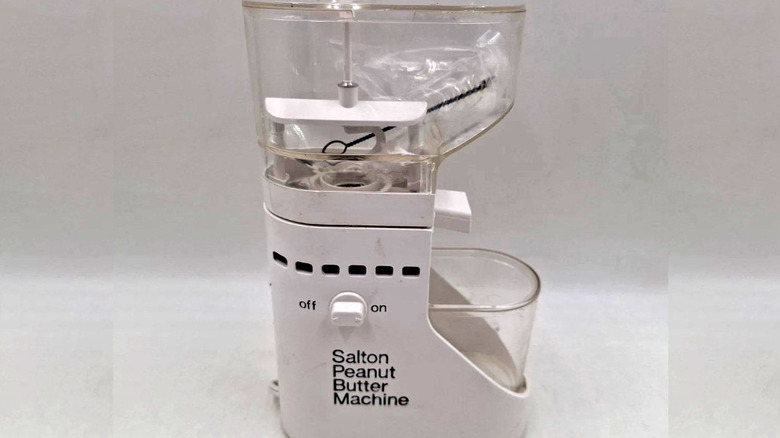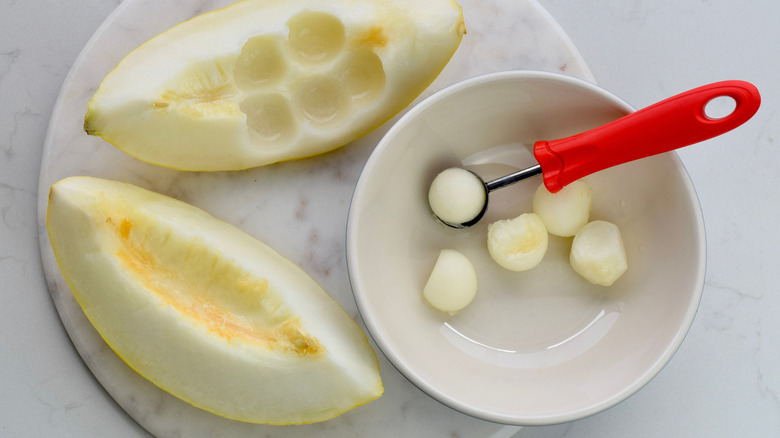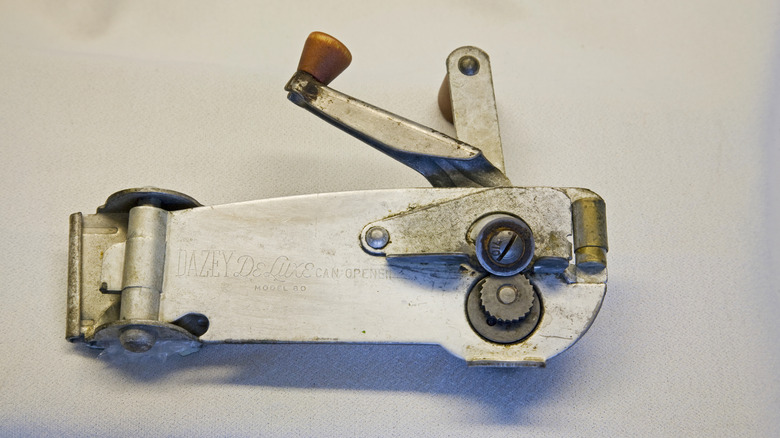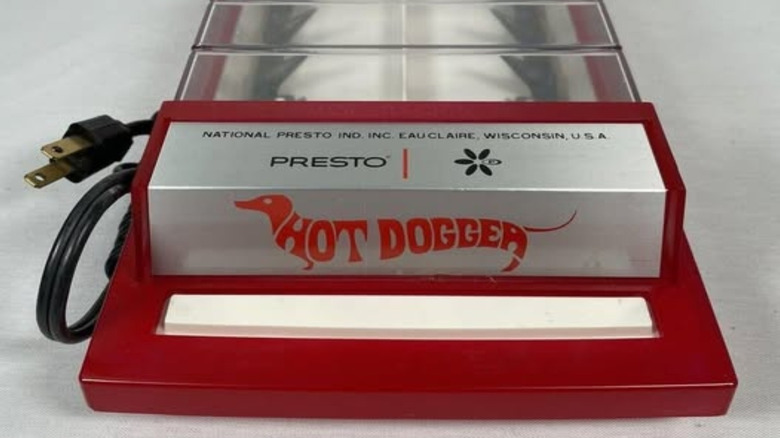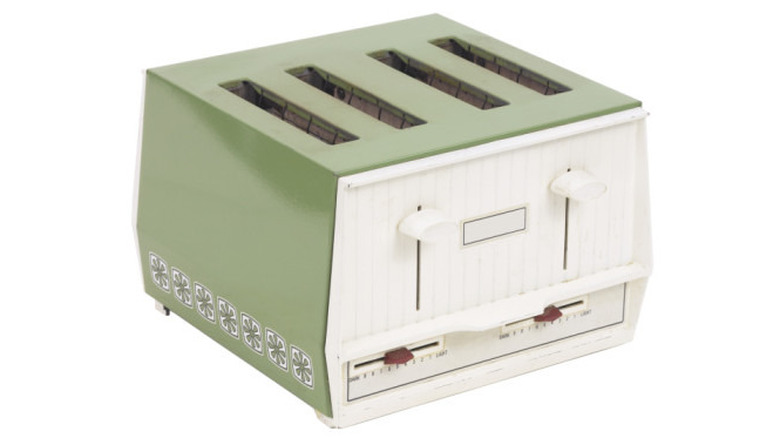Old School '70s Kitchen Gadgets We All Miss
We may receive a commission on purchases made from links.
The 1970s came through with more than just fashionable home decor as the era introduced essential kitchen gadgets which shaped home cooking for an entire generation. Some of the cool tools of the time included electric knives for Sunday roast slicing, avocado green appliances for baking, as well as spice carousels which added a really charming touch to home cooking. These kitchen tools served dual purposes as they enhanced daily routines while families used them during their weekend meals and special events. Although today's kitchen has more advanced appliances, we couldn't help but cherish the nostalgic charm of vintage kitchen tools from this decade.
Many of these gadgets now live on as retro decor pieces or make rare appearances during story time with the grandkids since the evolution of technology brought updated versions of certain old school kitchen gadgets while other items disappeared from use because modern tools became smaller and more versatile.
Regardless, some of these kitchen treasures from the past are of sentimental value for people who lived through that era and those who love vintage style. We're going to take a look at a few of the many kitchen gadgets which dominated '70s kitchens that we wouldn't mind getting back.
Popcorn popper
The popcorn popper made for very interesting movie nights and date nights. They were a staple in '70s kitchens, sometimes awarded as prizes in contests or redeemed with books of green stamps. One of its distinguishing characteristics was the transparent plastic dome or lid, which allowed you to watch the popping. This quaint design feature made popcorn production a form of entertainment, especially for children, who could gather around and watch the kernels explode and hop until the popper was full. The majority of those models featured a built-in stirring rod and simply needed a small amount of oil and popcorn kernels, without the need for a microwave.
Although they would eventually be overtaken by air fryer popcorn and microwave popcorn in popularity, the original poppers had their advantages. The popcorn had a better taste, there was user control over ingredients, and there was no reliance, on single-use packaging. However, while some modern versions of this kitchen gadget still exist, especially for those nostalgia-driven customers, they're hardly staples of every household. A lot of the original models sit now as a quirky kitchen accent or brought out on special occasions. Anyway, if you've been wondering why you should be popping your own popcorn, homemade popcorn tastes much better than store bought -– and the popper from the '70s can usher in a wave of excitement as you do it. Double win!
Fondue sets
Fondue sets were the signature pieces of '70s entertaining – think dinner parties, cocktail parties and meet-the-neighbors soirees. They were also quite popular as wedding gifts, and while fondue was first introduced to American kitchens in the 1960s, they exploded in popularity in the '70s, both thanks to their novelty and as shared meals became more and more popular. The classic kit consisted of a metal or ceramic pot, a stand and a burner, as well as long, color-coded forks. Dipping bread into melted cheese, fruit in chocolate or frying meat in hot oil.
Although the trend of fondue died out in the later decades, hundreds of sets had been lost in cupboards or put to use in home decor. Some of this had to do with practicality — fondue requires time to prepare and share, the risk of spreading germs is higher as the same fork was usually used for dipping, the forks themselves are too sharp, the cleanup can be tedious, and safety concerns surrounding parties that feature an open flame began to take hold. There are modern electric versions that make things quicker and easier, but they're hardly the center-of-the-table attractions. For people that grew up in this era, fondue was about togetherness, laughter, obsessing over chocolate fondue, and perhaps a little competition over the last piece of bread. Though it may have fallen from the dinner party must-have list, the fondue set has a warm spot in our '70s nostalgia.
Egg coddler
Egg coddlers were a lesser-known but much loved kitchen gadget in some 1970s homes — particularly those partial to a daintier or European-style of breakfast. Usually composed of porcelain or ceramic, egg coddlers were equipped with a screw-on metal lid that helped cook eggs gently in boiling water without being subjected to direct heat, for a soft, silky texture. This was also essentially another way of poaching eggs.
How to use them was quite straightforward – butter the interior, crack in an egg (or two), throw in optional herbs or cheese, seal the top tightly, and set the coddler in a pot of simmering water. The result was a soft yoked egg, only slightly oozing less wet than a poached egg, but less mess and far more consistent. They'd never been very common, and eventually people simply used them less and less — though they've always had a mix of performance and charm, and are a great easy way to get restaurant-style eggs in your own kitchen. They were crowded out by microwaves, electric egg cookers, and faster breakfasting habits. They're still made today in limited numbers, but you rarely encounter them in modern kitchens.
For those who remember them, egg coddlers evoke a more leisurely, deliberate era of cooking, where even cooking an egg felt like a small luxury. Such gadgets may not be as showy as fondue sets or popcorn poppers, but they have earned their own quiet corner in kitchen history.
Cookie press
By the 1970s, a cookie press was a must-have tool for any keen home baker, particularly around the holidays. The handheld cookie press, which was usually made of metal (or sometimes a very hard plastic), used a trigger or twist mechanism to press cookie dough through patterned disks to form shapes like stars, flowers and trees, or hearts.
They were a simple way to whip up dozens of decorative cookies fast, and were great for folks who didn't like the fuss of rolling out dough or cutting out individual shapes. Cheap and easy to use, the cookie press was mostly a one-trick pony, but it provided variety thanks to the different plates you could use and the occasional savory or frosted dough that it piped. For families, it frequently became more like an event, too, with kids choosing the shapes and helping to press the dough.
Although more modern electric versions are available now, the original manual cookie press has largely become a relic. Piping attachments and even premade cookie dough have rendered it redundant for many home bakers. Yet for those who have fond memories of the satisfying click-click of the trigger, and the pleasure of the perfectly formed cookie landing on the tray, the cookie press still symbolizes homemade tradition and the hands-on creativity of kitchen activities.
Milkshake maker
Milkshake makers added a bit of soda fountain pizzazz to home kitchens in the 1970s. The countertop appliances, usually with a metal mixing cup and a vertical spindle, blended milk, ice cream and flavorings into smooth, creamy shakes. Although they were available well into the '70s, they'd been around in home kitchens since the 1930s , particularly among families that enjoyed making diner-style treats without having to go in person. Most of these machines were single-use, but they did the one thing they were supposed to do, which was to churn out relatively frothy, consistent milkshakes with less effort than a blender requires. This gadget didn't just limit you to making the usual chocolate milkshake or gingerbread milkshakes, but could provide double duty for malts and protein shakes.
As kitchen gadgets grew more sleek with time, milkshake makers were outpaced by the all-purpose blender, which could blend a lot more ingredients. Milkshake mixers have their place, though it's primarily in old-school diners or in the homes of people who value the texture a blender cannot quite replicate. For others, those machines stir up memories of summer afternoons and something special, when making a milkshake was an event, not a press of the button.
Butter mold
What you didn't know about butter is before pre-packaged butter sticks were the norm, butter molds were a popular kitchen tool – especially in households that made or bought butter in bulk. In the 1970s, while not as widely used as in earlier time periods, butter molds still had a presence among some home cooks, or as part of decorative serving traditions. Butter molds could take countless shapes, from simple wooden, plastic, or porcelain molds with carved patterns to forming bricks or a stamp-style press that embossed designs onto the tops of butter pats. They were both practical, portioning butter neatly for the table, and decorative in that they added a pretty sculptural element to meals. Designs might include flowers, roosters, and simple geometric patterns.
With factory-sealed butter becoming commonplace and cold storage more prevalent, butter molds went out of favor. Their downfall could also have been influenced by time-saving demands – molding and stamping butter just involves too much extra work compared with slicing it off a store-bought stick. So we kind of get it. Butter molds today are mostly antiques of the past, though like other old things that become new, a comeback can never be completely ruled out.
Peanut butter machine
While not as common as other gadgets, home peanut butter machines did gain a bit of popularity in the 1970s, especially among health-conscious households or those that were interested in natural, preservative-free foods. As a result, people would grind roasted peanuts into fresh peanut butter at home, affording control over texture and ingredients at a time when commercial brands were not as natural and additive-free as homemade versions. Their emergence coincided with the '70s natural food movement which encouraged home cooks to prepare food from scratch– favoring homemade alternatives over overly processed food. Regardless, since store-bought peanut butter was available, shelf-stable, and required no preparation, it was a more convenient choice for busy households.
Peanut butter machines obviously still exist today, although mostly in a commercial or specialized food capacity. Forthose who had it, making peanut butter at home was not only about freshness -– it was a nudge toward personalization and also to living healthier. The peanut butter machine was an early harbinger of today's DIY food movement, though it is seldom seen on kitchen counter tops these days.
Melon baller
The melon baller must be one of the most straightforward tools in this list, but it was an inexplicably popular one – especially for parties — in the 1970s. This little spoon-shaped instrument, often metal with a wooden (or plastic) handle, was used for scooping out round, uniform balls from melons such as cantaloupe, honeydew melon, or watermelon. Several of its variations featured a double end for various ball sizes. Home cooks relied on melon ballers to make fancy fruit salads, party platters or garnishes for cocktails. Party presentation matters and the neat, round shapes turned what might have been a humble dish into something special. Melon ballers got creative workouts, too — sometimes shaping soft cheeses, butter, or even cookie dough.
Melon ballers haven't vanished altogether, but they have achieved niche status. These days, many people go with pre-cut fruit or simply use a kitchen knife for dicing. That's not to say that they don't still have a place in some kitchens, especially those of bakers, caterers or, for purely decorative reasons from those who appreciate a vintage aesthetic. Melon ballers are small and easily overlooked, and they are symbol of an era when even the fruit salad was a chance to get a little fancy. It's a testament to a time when the visual presentation of food in the '70s was a thing in which a great deal of attention was paid (especially when a guest was involved).
Counter-mounted can opener
The counter-mounted (or wall-mounted) can opener was a standard fixture in the kitchen of many households in the 1970s, particularly in those homes which prized durability and the ability of freeing up your hands. These openers were not small and handheld like the type we're accustomed to today, and were placed on countertops or walls. They were most commonly marketed in hardware stores, other general or department stores, or through home catalogs, and were usually installed as a permanent fixture as part of a kitchen modernization or remodeling. Prices were affordable, and the construction was so tough, they were seldom replaced. As electric can openers became popular, and as better-quality handheld models became more widespread, counter-mount models went out of style. Nowadays kitchens are all about straight lines and hidden hardware, which really leaves no space for these permanent machine-faces.
Yet vintage kitchen devotees and professionals will occasionally seek them out for their reliability. In pragmatically-minded '70s, the under-the-counter can opener soldiered on in the corner –- and for those who used it, it was almost always a dependable part of the daily kitchen experience.
Hot dog cooker
The hot dog cooker was among the more frivolous and novelty-driven kitchen gadgets of the 1970s. Made to cook hot dogs, and in some cases buns, these kitchen appliances offered a fast, convenient method of creating a fun meal or snack, particularly for kids. Some designs included vertical slots for steaming or grilling while others had electric prongs that cooked the hot dogs from the inside out. Hot-dog cookers were largely single-purpose, but their draw was in their novelty and convenience –- no need to start a stove or set a button on a microwave. Some cooked both the hot dogs and the buns at the same time, making them particularly appealing for sleepovers, a quick lunch or just hanging out.
For all its initial fun, the hot dog cooker lacked long-term staying power. Eventually microwaves and toaster ovens won out, which could accomplish the task faster and with less mess. Dozens of the original models still exist as retro collectibles or conversation pieces. For anyone who owned one, the hot dog cooker wasn't just about food — it was about fun, and it represented a time when kitchen gadgets tried to add a touch of amusement to the day's meals.
Avocado green appliances
No talk of 1970s kitchens would be complete without mentioning avocado green appliances. This striking, earthy color showed up on refrigerators, blenders, toasters, mixers and ranges. With harvest gold and burnt orange, avocado green made up the decade's color palette, turning the everyday kitchen tool into a statement of fashion. The color contributed to a warm, lived-in vibe, and was often paired with wood cabinets, with laminate countertops, and patterned linoleum floors.
As design trends went in a brighter and flashier direction, such as in the 1980s, the avocado green ended up looking dated. As a result, many of those gadgets were later replaced not because they ceased functioning, but because the color no longer suited the look of a modern kitchen. However, for others, creamy avocado green appliances trigger a feeling of warmth and nostalgia. Some manufacturers have even reissued the color in limited-edition retro lines like this two-slice toaster for people that are nostalgic for the '70s kitchens of the past. Original avocado green gadgets can now be found in vintage shops –- or, in the case of dogged appliances, still in use today, decades later in a basement or cabin kitchen somewhere.
